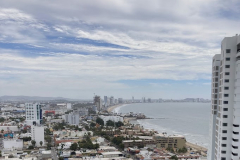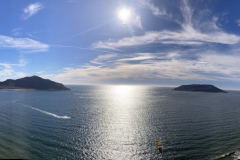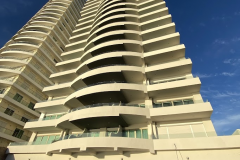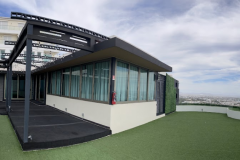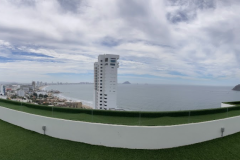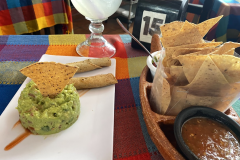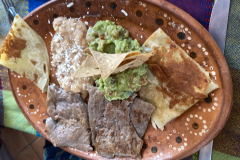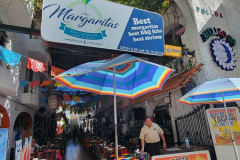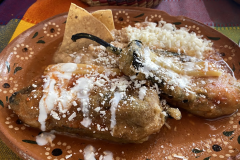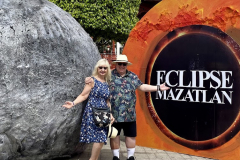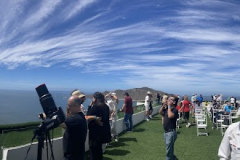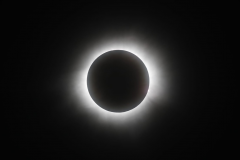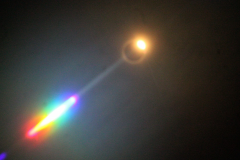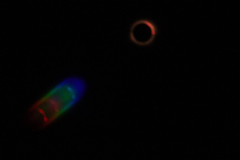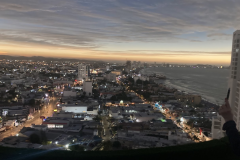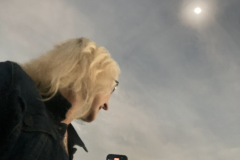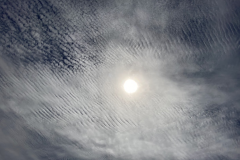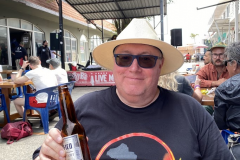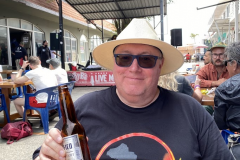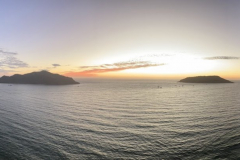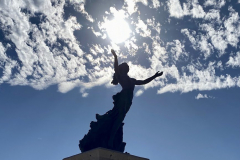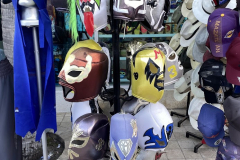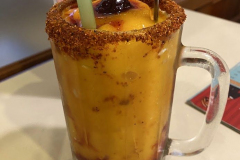Planning for the eclipse in 2024 actually started several years ago. When I asked my wife Marie if she wanted to go, her first thought was, “Well… we need to go check it out first, right?” So we got TWO trips to Mazatlán in, first in February 2023 to check out Mazatlán and learn the lay of the land, and second in April 2024 for the actual eclipse. After a fantastic trip in 2023 we felt confident that even if challenges appeared for the 2024 event we’d be familiar enough with our surroundings to deal with them. But in fact the experience was also overwhelmingly positive.
For those unfamiliar with Mazatlán, it’s a city of about half a million people on the west coast of Mexico across the Gulf of California from Baja California and Cabo San Lucas. The city features a long Malecón (boardwalk) extending from the Centro historical area and the Olas Atlas beaches with spectacular cliffs and formations (famous for statues and cliff diving) along several beautiful beaches for over 8 km to the Zona Dorada, or Golden Zone, where a lot of the larger hotels are. Our favourite area in the Zona Dorada is Av Playa De Gaviotas, a kitschy area north of the Malecón replete with shops, bars, and restaurants with lots of live music. While on our first stay we stayed a 15m walk N of Gaviotas at the Hilton Doubletree, this time we stayed at the Hotel Tramonto right on Gaviotas.
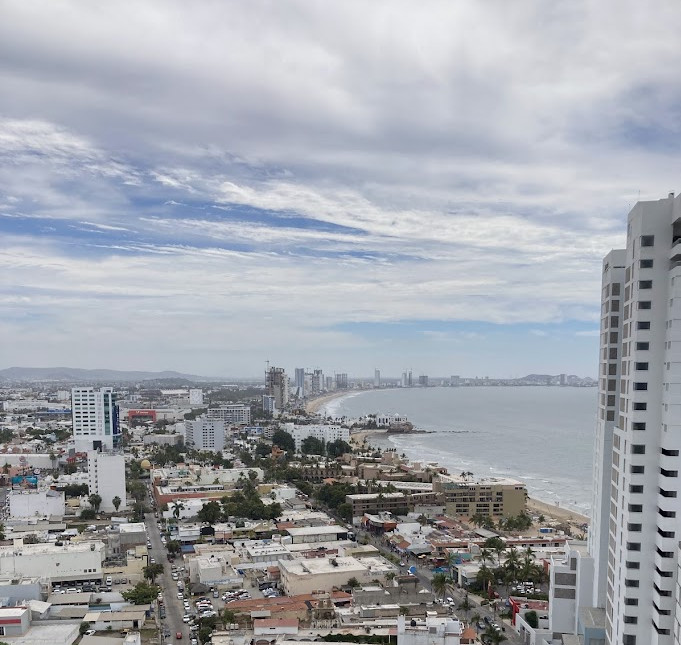
From Wikipedia:
Mazatlán is a Nahuatl word for “place of deer”. The city was colonized in 1531 by the Conquistador where many indigenous people lived. By the mid-19th century, a large group of immigrants arrived from Germany. Over time, Mazatlán developed into a commercial seaport, importing equipment for the nearby gold and silver mines. It served as the capital of Sinaloa from 1859 to 1873. The German settlers also influenced the local music, banda, with some genres being an alteration of Bavarian folk music. The settlers established the Pacifico Brewery on 14 March 1900. Mazatlán has a rich culture and art community. In addition to the Angela Peralta Theater, Mazatlán has many galleries and artist’s studios, such as the Mazatlán’s art museum, the Museo del Arte, which both have exhibits from Mexican and international artists. 1
Mazatlán is also the first place in North America where the total 2024 eclipse touched land, and it is one of the best places along the line of the eclipse, where one might hope for excellent weather. On the downside, the Province of Sinaloa is reported to be unsafe if you’re travelling outside the Mazatlán core tourist zone, so moving around to try to find gaps in the clouds is not a great idea. However, Marie and I both shrugged. “If it’s cloudy, we’re still in Mazatlán!”
The first time we travelled to Mazatlán was during Carnival, the third largest in the world, and we had some concerns that the roughly million people who descend on Mazatlán during Carnival would cause difficulties at the airport and getting around the city, but these concerns were unfounded. Similarly, the substantially larger Eclipse tourist masses gave us some concern that things might get choked up, but again it turned out to be a non-issue. After flying from Winnipeg to Calgary, staying overnight and taking the 3-hour flight to Mazatlán, our arrival at the airport was trouble-free. Our flight appeared to be the only one arriving, so passing through customs, retrieving our bags, and catching a ride to our hotel (via the King David transportation company) was trouble-free.

Our hotel room at the Tramonto was on the 15th floor. It was spectacular—expansive windows opened to a wrap-around balcony that gave us access to the western sky and the South, so if we wished, we could view the entire eclipse from our balcony. This was unnecessary, but it was a welcome sight upon our arrival.

The scenery from our window was similarly spectacular—the three islands off the coast were beautiful, as always, and watching sunsets from the balcony was amazing.

Before our trip, we received a notification from the hotel that they would make the hotel’s roof available for eclipse viewing, accompanied by eclipse glasses and refreshments. This seemed to be the best possible scenario, and at $550MXN or $45CDN, it was quite a bargain.

Once we’d checked out the hotel, we decided to go to the roof and see if we could get access the day before. It was deserted, so we could check out our Eclipse viewing location. As you can see from the panoramas below, it was perfect. A clubhouse with a bar and seating was accompanied by an expansive terrace with an astroturf deck where we could easily set up our equipment. It looked like we were set!


We arrived on Saturday, and the Eclipse was on Monday, so we spent a quiet day on Sunday relaxing and reacquainting ourselves with our beloved Gaviotas area. Brunch was at Margarita’s just down the street from our hotel, where we enjoyed luscious chips with guacamole and excellent Carne Asada with a quesadilla and tortillas, washed down, of course, with a margarita (hey, it was past noon back home!) Marie enjoyed the marvellous Chili Rellenos.




This was consistent across our trip – the food in Mazatlán is cheap, plentiful, and excellent without being overly spicy (although, of course, sauces and salsas are served on the side to spice things up)! I’ll stop posting food pictures, but we sure had a lot of fun checking out restaurants, including “hole in the wall” taquerias where locals tended to eat, and you weren’t quite sure what you’d end up receiving when ordering off an English side of the menu to a Spanish speaker!
Mazatlán had been gearing up for the eclipse for some time, as many displays and photo opportunities were scattered around the Centro historical area. At the same time, we walked about, including the scene below in the Plaza de la Publicana near the famous Cathedral and Mercado (market) in Centro.
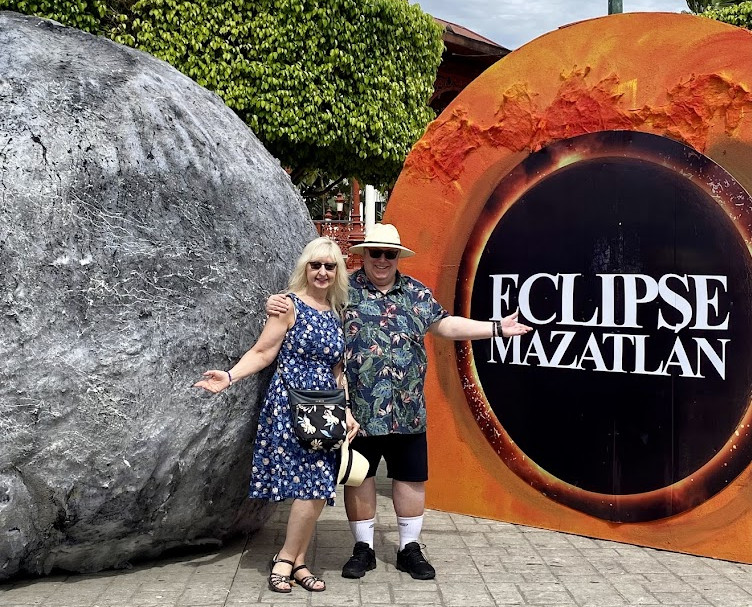
Eclipse day dawned with variable clouds, but it looked like they would hold off until after Totality at noon. I set up a simple tripod and Canon DSLR with a 200mm telephoto lens. I was not there to take pictures – there would be tons of them to look at afterwards. I did, however, want to attempt to get some “flash” spectra of the Sun with a diffraction grating, which smears out the sun’s light into its constituent colors. While the Sun’s spectrum is usually continuous (a rainbow), capturing parts of the atmosphere can get some fantastic effects. So, the plan was to start recording on the camera just before totality, ignore it during totality, and enjoy the eclipse, hopefully capturing some nice images. In the meantime, photographers like my friend Daemon, who also stayed at the Tramonto, could capture the more usual eclipse images.
The Moon began to contact the sun at around 11 a.m., and we watched its slow progress across the face of the Sun with anticipation. The gathering on the rooftop was jovial, and we met some nice folks.

At noon, the sun disappeared on cue—light clouds didn’t block our view very much, so we got a fantastic view. There are not many ways to convey the feeling of seeing the Sun go out—it’s eery, exhilarating, emotional, and scary all at once.

My images were less successful but were beautiful in their way.
I’d call these a failed experiment, but they might be interesting to members. The images were taken with a Canon EOS1100D DSLR and a 200mm telephoto lens, with a SA100 Star Analyzer 100l/mm diffraction grating mounted on a 3D-printed adapter.
The SA100 diffraction grating spreads the sun’s light into a spectrum that can be seen next to the object being imaged. The objective is to capture different parts of the solar atmosphere as “flash” spectra as they become visible during the eclipse. Also of interest are the spectra of prominences and other solar features.
Certainly a learning experience for my next Eclipse!

The first image taken above during Totality near C3 (alas, with some focus issues incurred during the swapping of the filters just before Totality – looked ok in the viewfinder, alas) shows the spectrum of the corona along with the emerging upper chromosphere. The chromosphere and prominence spectra have Hα (red), He I (orange), and Hβ (light blue) lines prominent. This proves the Sun comprises Hydrogen and Helium (surprise!) From the corona, you can make out a light Fe XIV line in the green, proving the Sun has Iron in it, demonstrating it is at least a second-generation star seeded with heavy elements by supernova explosions. The corona spectrum is dominated by two forbidden emission lines of highly ionized iron – Fe XIV line at 530.3 nm (green) and Fe X at 637.4 nm (orange/red). I got the exposure right on this one! Next time, I’ll stack a few dozen to improve the resolution (after focusing correctly) and get more corona lines showing.

The second image was taken at Third Contact (C3), and shows the “Diamond Ring” effort in the zero-order image (the Sun and Moon) with the first-order continuous solar spectrum to the lower right? Alas, this image is both out of focus and over-exposed, so I have some changes to make before my next attempt! I’ll probably use a camera I can easily computer control so the significant exposure change between Totality and C3 is managed better, with some bracketing.

We could readily hear the multitudes on the beaches reacting to the Eclipse and applauding wildly when the Sun reappeared. However, the city was tranquil as darkness descended, and the entire horizon was lit with twilight around the moon’s shadow as it passed over us.

All too soon (4m 20s later, to be exact), the Sun reappeared, and the Moon receded. As expected, the Eclipse brought along its own weather, causing interesting effects on the clouds after it was over.

With the big show over, we were thrilled to have experienced it with friends new and old and spent a lovely week enjoying Mazatlán!

The rest of the trip was fantastic, with excellent weather. Below is a gallery with a selection of images from our trip. Enjoy!

